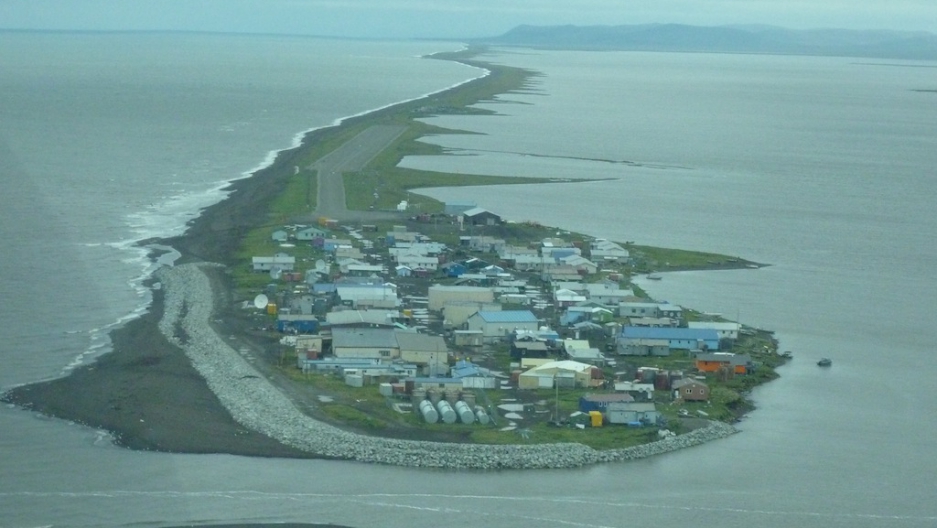Presenting climate deniers with facts doesn’t seem to persuade. Offering free-market solutions to reduce greenhouse gas emissions doesn’t work either. And pointing to the economic opportunities from clean technologies seems to be a losing battle, too.
So maybe the best hope is to spotlight the human toll of climate change. The Village of Kivalina in Alaska is ground zero for climate change:
Kivalina City Council member Colleen Swan says the people of the village rely for food mostly on what the environment, especially the ocean, provides for them. “It’s been our way to make a living for hundreds of years,” she says. “During the winter months the ice is part of our landscape, because we go out there and we set up camps and hunt, and it’s all seasonal. We were able to see the changes years ago.”
In May, June and July, the men of the village go out on the ice hunting bearded seals. They cut up the seals, dry them and store them for the winter. “That provides the winter supply,” Swan says. “That’s what keeps us warm in the Arctic.”
About 15 years ago, the villagers noticed the season started two weeks early and the ice began to thin sooner than before. “We didn’t notice at first the gradual change until it became two weeks early consistently from year to year,” Swan says. Now, she says, the hunters must remain vigilant, keeping a close eye on the ice, the seals and the sea. If they don’t, they could miss the hunting season. “The hardest one to swallow was the fact that our ice wasn’t safe any more for us to set up whaling camps,” Swan says.
Unfortunately it will be people in “edge” communities like Kivalina, where they eke out a living from the land and sea, who will face the brunt of climate change impacts. In that respect, Pope Francis was right to call climate change a moral issue.
Leave a Reply
You must be logged in to post a comment.



